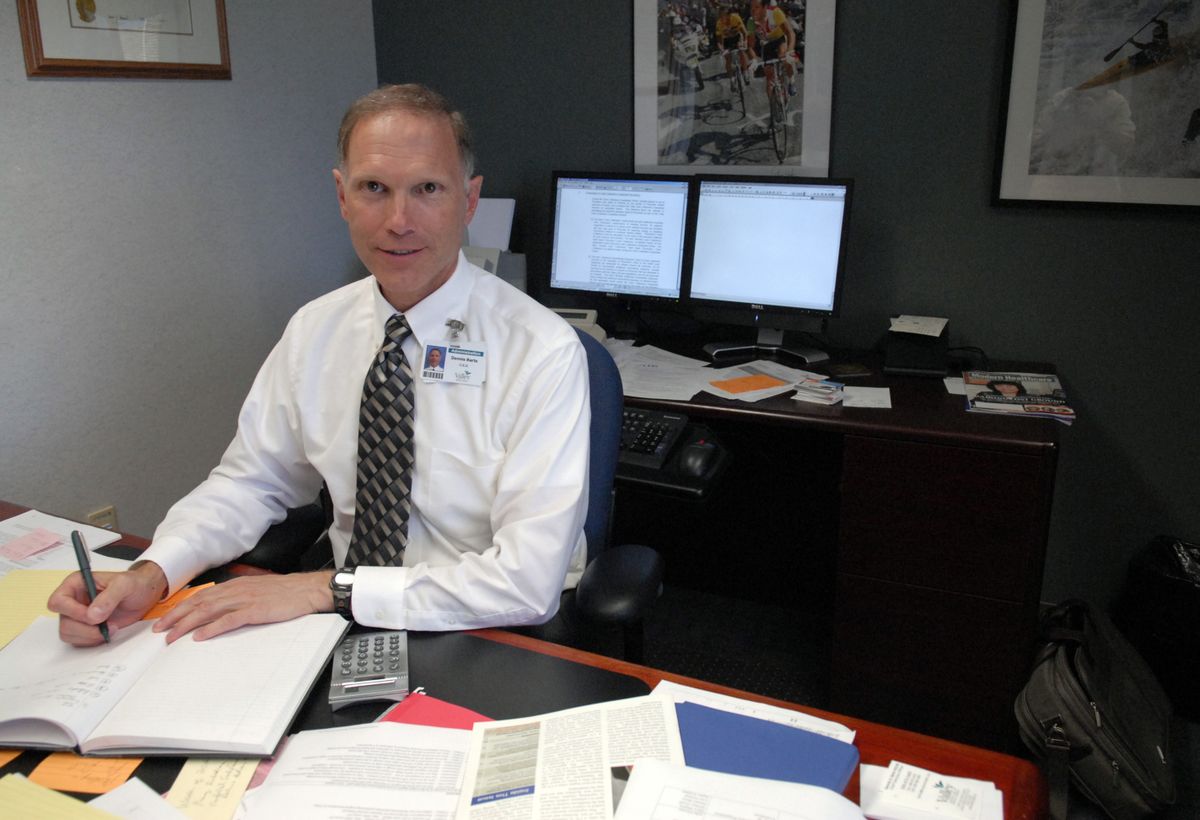Hospital marks 40 years
Medical facility has grown up with Spokane Valley

Valley General Hospital was so much a part of the fabric of the Valley when it opened 40 years ago that many residents still call it that, even though the name changed to Valley Hospital and Medical Center long ago.
The hospital still gets letters thanking them for good care that refer to it by its old name, said CEO Dennis Barts. “And these are people in their 20’s,” he said.
Maxine Evans, 95, was one of those residents who were happy to see the hospital open in January of 1969. She was one of its first patients and was in the hospital last week recovering from a bout of pneumonia. “It was wonderful to have the hospital,” she said. “Before that we had to run into town in the middle of the night.”
The Valley had grown and needed its own hospital, she said. “I’ve been in off and on for years,” she said. “They’ve been very reliable, very good. The people have all been very nice.”
In the early years the hospital was much more laid back, she said. “In those days you just asked for something and you got it,” she said. “It was very informal to start with.”
Evans said she prefers the Valley Hospital to others in the area. “I know the doctors out here,” she said. “They’ve done a very, very good thing for our Valley.”
While the hospital has grown and changed over the years, the change Evans was most excited to see was to the menu. “They have the very best food,” she said.
The kitchen is a point of pride for the hospital and consistently gets rave reviews, Barts said. The food is good and patients are able to order off a menu at any time of the day. The food services director routinely stops by patient rooms to ask if they are happy with the service. “You don’t think of hospital food as something you want to eat,” he said.
Other recent changes have been made by new owner Community Health Systems that took over Deaconess and Valley Medical Centers in October. The most noticeable of those is the new beds in every room. “The beds are huge,” he said. “They’re really comfortable compared to the old mattresses.”
The beds also have built-in scales that send information wirelessly to the computer network, something that comes in handy for patients with congestive heart failure who have to be weighed several times a day to track how their medicine is working. “It really helps the nurses. Our goal is to have our nurses spend as much time as possible with the patients.”
There is also a lot of new equipment, including a cardiac monitoring system, surgical equipment, fire suppression equipment and a new CT scanner that cost over half a million dollars. There is also new digital radiography equipment that sends results to doctors electronically. “You don’t have to wait for film to be developed,” he said.
The hospital is a Level 3 trauma center and handles nearly everything except neurosurgery and heart surgery. The emergency room sees about 44,000 patients a year, a high number for a hospital of its size.
Barts, who has only been on the job since March, said he has been impressed with the close-knit staff at the hospital. “This hospital, probably more than I’ve ever worked, is a family culture,” he said. “We’ve got a lot of people who have worked here for 20 years.”
That atmosphere is helped by the hospital’s small size compared to others in the area. “This is the size hospital I like best,” he said. “You can round through the hospital every day and get to know the employees.”
So far there are no events planned to mark the hospital’s 40th anniversary, but there will some sort of celebration in the fall, Barts said. “I think we’ll do some events. We’ll do some things to celebrate our anniversary during Valleyfest.”
In the meantime, residents can look for other changes to come. The hospital is licensed for 123 beds, but only has about 90 now. There are plans to renovate sections of the hospital in order to add more beds. The goal is take care of as many patients as they can, Barts said. “We really have a social contract with our community.”